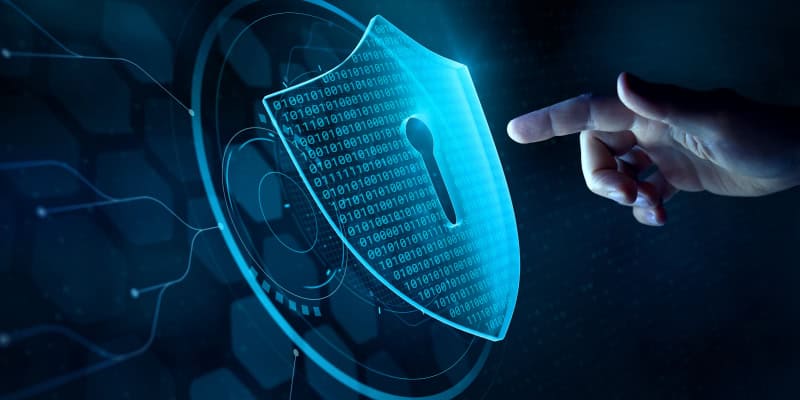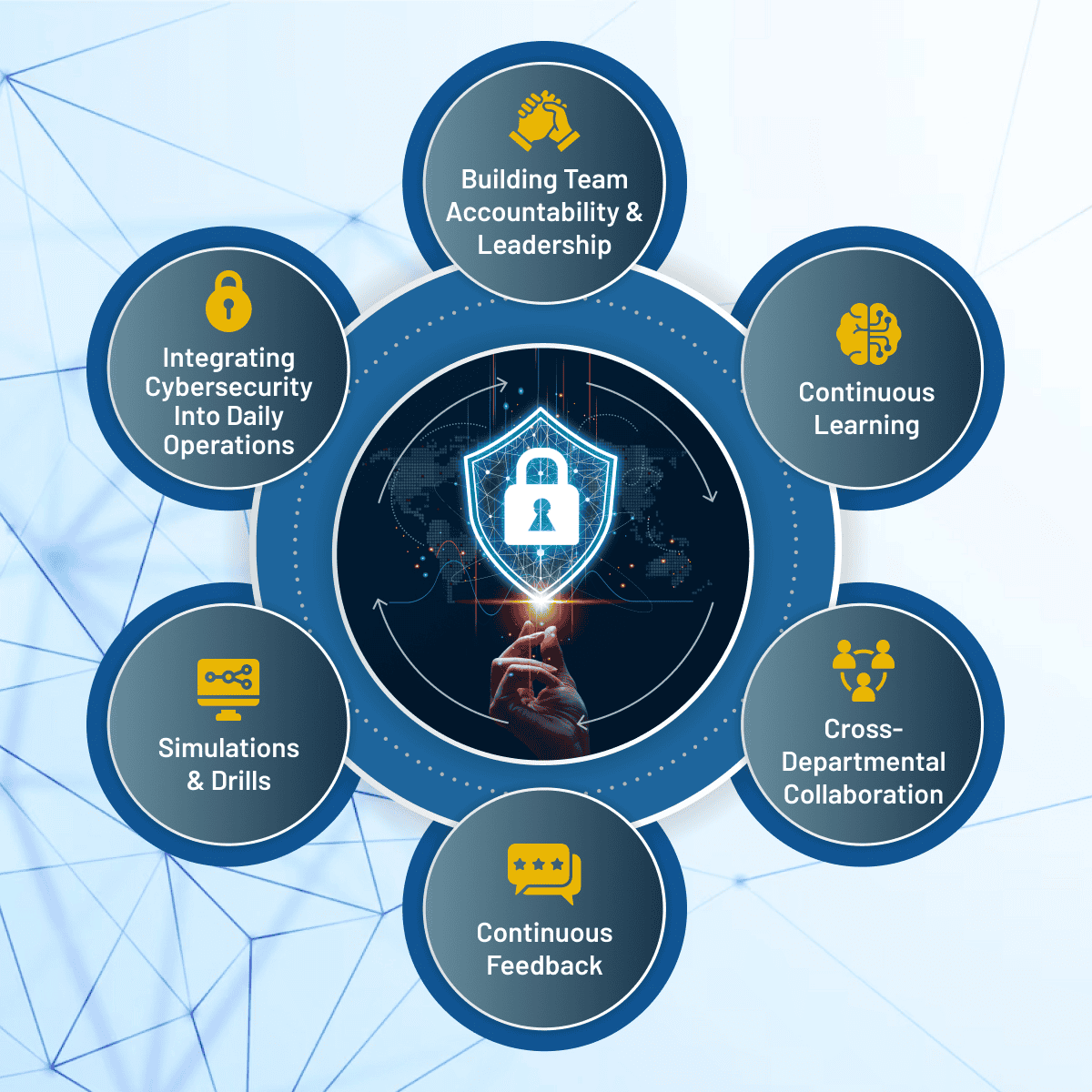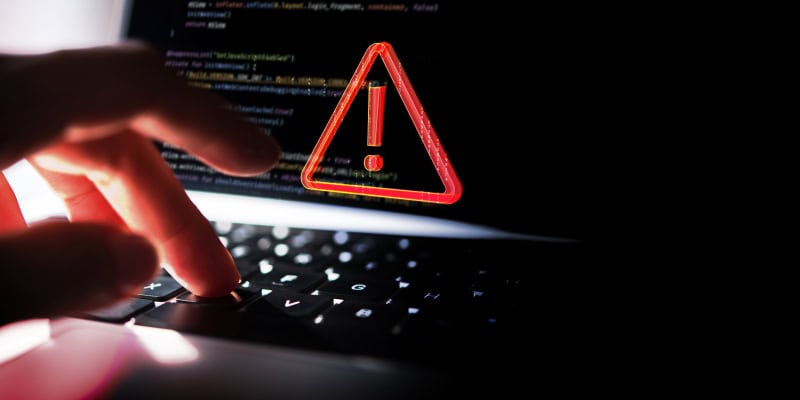In today’s highly interconnected digital world, fostering a solid cybersecurity culture within your organization is essential. As cyber threats continue to evolve across digital boundaries, leading cybersecurity service providers stress the importance of creating a culture that prioritizes security. A culture where cybersecurity principles influence every decision, action, and policy across all sectors is crucial for safeguarding sensitive data and maintaining a secure digital environment. Adopting a holistic approach and implementing practical cybersecurity measures can transform every employee into a diligent guardian of digital assets. This guide will help you learn how to cultivate this culture within your organization to secure a resilient future.
Core Components for Developing Your Cybersecurity Culture
Cybersecurity is not just a technical concern but a cultural issue impacting every level of the organization. Creating a culture of cybersecurity at work requires integrating security practices, awareness, and behaviors into everyday operations and organizational ethos. Cybersecurity needs extend beyond the IT department and should be shared by everyone—from top executives to entry-level staff.
Here’s what it involves:
- Cultural Transformation & Risk Management: Developing a cybersecurity culture means making cybersecurity a collective commitment among all employees to safeguard the organization’s digital assets, safety, and security. It is about fostering a proactive stance toward cybersecurity that is necessary today to ensure an authentic defense against cyber threats, where every employee is a stakeholder in safeguarding data. With data breaches on the rise and given that human error is often the cause of data breaches, continuous education and awareness training are crucial for minimizing risk.
- Employee Roles & Leadership: Every employee is on the first line of defense in cybersecurity. Adhering to security rules and promptly reporting suspicious activity is the first step in that defense, which contributes to maintaining a strong cybersecurity stance. Leadership plays a pivotal role in shaping this culture, empowering employees through strategic discussions, resource provision, and updated training by demonstrating their concern and commitment.
- Organizational Implementation: The Chief Information Security Officer (CISO) typically leads the strategy, while Human Resources (HR) educates employees on policies through ongoing training. IT teams implement technical security measures, while communications and training teams develop programs to enhance employee security awareness. Internal auditors and compliance teams assess policy adherence and identify areas of improvement, while legal and risk management teams ensure practices comply with laws and minimize security breach risks.
Also Read: Why SMBs Should Adopt an Enterprise Mindset in Cybersecurity
Essential Steps to Build Your Cybersecurity Culture
Consider these actionable tips to build a strong cybersecurity culture.
1. Building Team Accountability & Leadership
Building a strong security culture starts with empowered teams and committed leadership. Here are key steps to establish accountability across your organization.
- Foster Accountability & Responsibility: Leadership must lead by example, demonstrating their commitment to cybersecurity through actions and decisions. Essential cybersecurity steps to secure our world begin with this approach, which will instill a sense of accountability throughout the organization and inspire and motivate employees to uphold cybersecurity standards.
- Engage in Continuous Learning: As cybersecurity threats evolve, so should your training. Offer regular, relevant cybersecurity training to empower employees and help them understand their critical role in protecting digital assets. Encourage them to stay informed of new threats and cybersecurity practices.
- Promote Cross-Departmental Collaboration: Cybersecurity concerns the entire company, not just the IT department. Facilitate regular interaction involving multiple departments to discuss cyber risks and develop unified risk-mitigation strategies. This fosters a sense of unity and cooperation in the organization’s cybersecurity efforts.
- Encourage Continuous Feedback: Establish channels for ongoing feedback on cybersecurity practices and identify strengths and areas needing improvement. Recognizing milestones and positive changes motivates the team to work for company security.
- Use Simulations & Drills: Conduct cybersecurity drills and simulations to enhance team readiness for real-world threats. They assess the effectiveness of current measures and steps for improvement.
- Integrate Cybersecurity Into Daily Operations: Embed strict cybersecurity measures into daily operations to ensure they become a natural part of the organizational ethos and culture.
2. Implementing Strong Security Measures & Controls
Clear, well-communicated policies are critical for defending against cyber threats. A robust cybersecurity culture in organizations is built upon these policies, which guide employee behavior and safeguard digital assets and information systems. Prioritize policy development and ensure these policies are widely understood and accessible across your organization.
To reduce the risk of cyberattacks, consider the following security practices:
- Use Strong, Unique Passwords: The password for each online account should consist of a combination of upper- and lowercase letters, symbols, and numerals and be impossible to guess.
- Detect & Report Phishing Attempts: Educate your employees to identify and quickly report suspicious emails, links, and other phishing attempts.
- Update Your Software Regularly: Update your software promptly to fix functional issues and provide security solutions for vulnerabilities. Turn on automatic updates to ensure downloads come from authentic sources and avoid fake pop-up windows, protecting your system from malware and enabling instant action when due.
- Enable Multi-Factor Authentication: Add an extra layer of protection with fingerprint scans, facial recognition, authenticator application, secure tokens, or a one-time code sent to your mail or phone to provide greater security.
3. Establishing Policy Framework & Standards
Developing strong policies around data handling, incident reporting, and security awareness is essential for minimizing risk and ensuring compliance.
- Data Handling Policies: Develop data handling policies to ensure correct data processing and storage, minimizing breach risks.
- Incident Reporting Policies: Establish clear incident reporting policies to help employees identify potential security breaches or attempts. Outline the necessary steps for immediate reporting to ensure quick response times, transparency, and accountability in managing threats.
- Promote a Security-First Mindset: A cybersecurity culture that encourages a security-first mindset must become a central consideration of policy formulation. It involves more than tools and protocols. It is about ingraining a sense of cybersecurity into daily operations. Encourage and guide prioritization and clarify that cybersecurity is a shared responsibility.
Tip: Observe Cybersecurity Awareness Month and take other simple steps to strengthen your sense of security and commitment to action.
Policies must be clear and accessible to all. Regular training and updates reinforce policies and inform employees about threats and practice changes. Additionally, involving employees in the policymaking process, where possible, ensures better compliance and engagement.
Transform Your Organization’s Security: Partner With Experts
Creating a resilient cybersecurity culture starts with an unwavering commitment at every organizational level. A proactive approach that involves continuous education, robust policies, and shared responsibility can strengthen defenses against evolving threats. Regular training, realistic simulations, and a proactive security-first mindset will help ensure your organization is always prepared.
As your trusted IT solutions partner, CMIT Solutions at Silver Spring specializes in helping organizations build and maintain this essential security-focused culture. Our team can help strengthen your cybersecurity foundation and safeguard your organization’s future. Ready to transform your security culture? We are here to help. Connect with us today.
While our primary office is in Silver Spring, CMIT Solutions of Silver Spring is dedicated to delivering expert IT support, proactive cybersecurity, and reliable technology solutions to businesses throughout the region. This includes our valued clients in Rockville, Derwood, Chevy Chase, Olney, Burtonsville, and Highland. We’re committed to being your trusted IT partner for local businesses.
Our IT Services
| Managed IT Services | Cybersecurity | Productivity Applications |
| IT Support | Cloud Services | Network Management |
| Compliance | Data Backup | Unified Communications |
| IT Guidance | IT Procurement |





